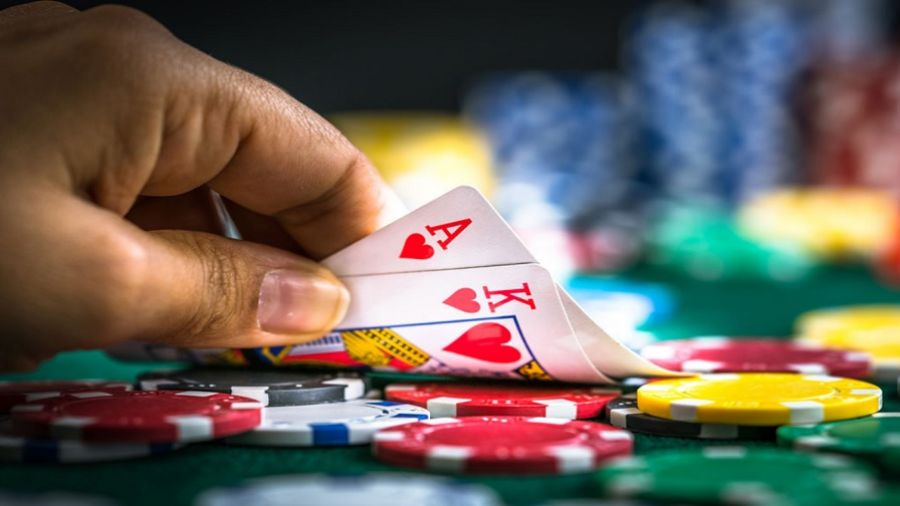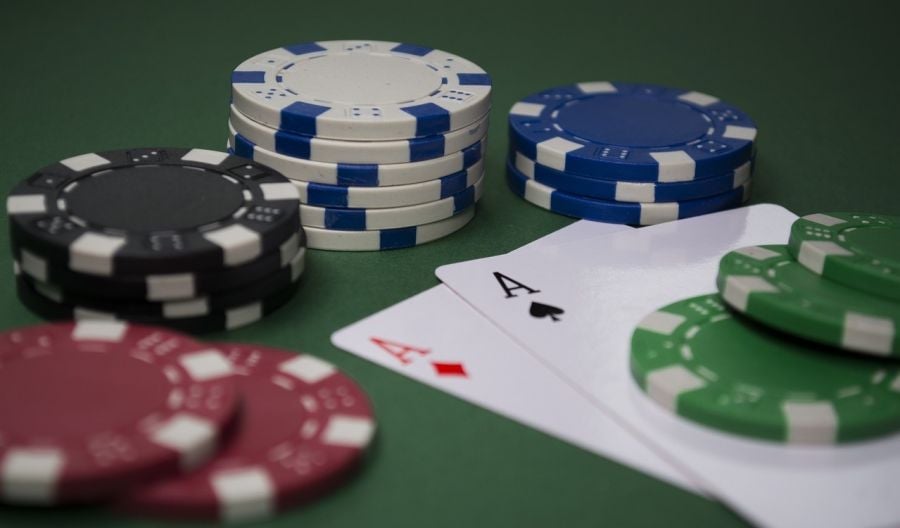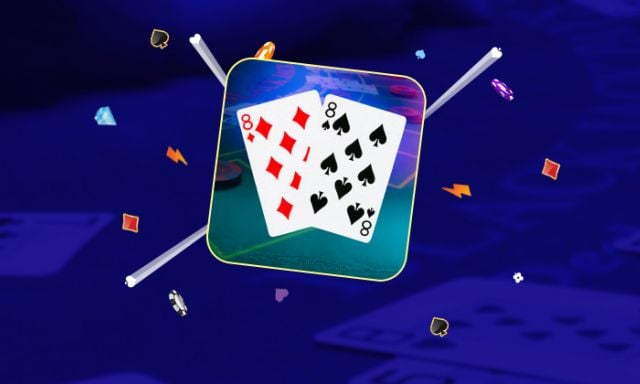When to Split in Blackjack: A Strategy Guide
Key Takeaways:
- Splitting pairs in blackjack can significantly influence game odds, potentially increasing winnings. The strategy involves dividing a pair into two separate hands.
- The decision of when to split is crucial and can depend on several factors, including the dealer's up card and specific game rules. Not all pairs should always be split.
- Basic splitting strategy includes the use of a chart that guides when to split pairs based on statistical probability, considering both the player's pair and the dealer's up card.
- Advanced splitting strategies challenge basic rules and consider more variables such as total hand value and specific game rules. These advanced techniques can improve gameplay but require deeper understanding and experience.
- Common mistakes include the "all-or-nothing" approach, such as always splitting 10s or never splitting, which can lead to losses.
- Splitting aces and eights can potentially increase odds of beating the dealer, while the decision to split other pairs depends on the specific scenario.
- Different game scenarios and rules may require varied splitting strategies and frequency. Adapting to these variations is crucial for mastering the strategy.
- To improve at splitting, players should practice regularly, learn to count cards, understand game-specific rules, and use strategy charts as needed. Always aim to make statistically optimal decisions over time.
At PartyCasino, we understand the complexities of online blackjack and live blackjack and the intricate strategies that can turn the tide of the game. One of these paramount tactics is the art of splitting pairs. Recognizing when to split in blackjack and mastering the blackjack split strategy can dramatically shape your gaming journey, influencing the odds in your favor and potentially boosting your winnings. But what does it mean to split a pair in blackjack, and how can one use this strategy to gain an edge?

In essence, splitting is a unique rule in blackjack that opens up a new dimension of possibilities and strategies. It allows you to divide your hand into two separate hands, offering the opportunity to turn a difficult situation into a winning one. However, knowing when to split pairs in blackjack is a crucial part of this strategy. Splitting at the wrong time can be as detrimental as not splitting when the situation calls for it.
From split aces in blackjack to understanding blackjack splitting rules, we will guide you through the labyrinth of blackjack strategy for splitting cards. As we delve deeper into this topic, we aim to help both beginners and seasoned players refine their decision-making skills. So, buckle up as we embark on a journey through the world of blackjack pair splitting strategy, providing valuable insights into when to split eights in blackjack and the most effective blackjack split techniques. We want you to leave not just informed, but confident in your next casino outing. Ready to level up your game? Let's get started.

Understanding Splitting and Its Rules
What Does it Mean to Split in Blackjack?
When we talk about splitting in blackjack, we're referring to a specific tactic available to players when they're dealt a pair - that is, two cards of the same rank. By choosing to split, the pair is divided into two distinct hands, each played separately for the remainder of the round. In essence, splitting gives you the power to convert a single betting position into two, potentially doubling your chances of defeating the dealer.
The prospect of turning a tough hand into a winning game is undoubtedly appealing, but remember, timing is everything. The trick to unlocking the full potential of the split lies in knowing exactly when to apply this tactic. Understanding when to split, as well as mastering the technique's nuances, can be the key to elevating your blackjack game. But before delving further into strategy, let's get a firm grasp on the fundamental rules governing splitting in blackjack.
Blackjack Split Rules and Guidelines
The initiation of a split begins when you're dealt two cards sharing the same value. To signal your intention to split, you'll place an additional bet, identical to your original wager. You'll then split the pair, transforming your single hand into two independent hands. After the split, the dealer will deal an extra card to each of your new hands, and the game continues as usual.
Although this may sound straightforward, it's important to remember that the rules surrounding splits can vary dramatically from one blackjack variant to the next. For instance, certain casinos permit players to 'resplit' if they're dealt another pair after an initial split. Conversely, others might restrict the ability to split based on the value of the pair, commonly limiting the split of 10s or Aces.
Each game, each table, each casino could potentially introduce a new set of guidelines for splitting, impacting the player's decisions and strategies. Therefore, it's crucial to familiarise yourself with the specific blackjack split rules and guidelines in play before diving into a game. Only by thoroughly understanding these can you start devising a foolproof splitting strategy, honing your game, and working towards that coveted win.
Basic Splitting Strategy
Understanding the Basic Splitting Strategy in Blackjack
In blackjack, players utilise a basic splitting strategy to improve their chances of winning. This strategy primarily hinges on a tool known as the blackjack split strategy chart. This chart, a tabulated guide, advises players on the optimal times to split pairs based on the statistical likelihood of success.
The split strategy chart considers both the pair in your hand and the dealer's face-up card to guide your split decisions. Remember, the primary goal of blackjack is not merely to get as close to 21 as possible but to beat the dealer's hand without busting. Therefore, understanding the dealer's potential hand outcomes based on their up-card is crucial to determining your splitting strategy.
It's important to note that the split strategy chart is a tool based on mathematical probability and doesn't provide a surefire guarantee of winning. However, it serves as a valuable guide, especially for beginners finding their footing. By following the chart, you can learn to make statistically advantageous decisions and improve your chances of success.
Best Hands to Split in Blackjack
When it comes to splitting in blackjack, there are specific pairs that are considered more advantageous to split than others, as outlined by the basic strategy. Here's a breakdown of those pairs:
- Aces: A pair of aces is one of the best hands to split in blackjack. When you split aces, you have a chance of hitting two blackjacks, which would result in a significant win. Additionally, an Ace is highly flexible, valued at either 1 or 11, which provides a plethora of potential favourable outcomes for your split hands.
- Eights: At face value, a pair of eights gives you a total of 16 - one of the worst hands in blackjack. It's a hand that's uncomfortably close to 21, running a high risk of busting with an additional card, but still likely to be beaten by the dealer. Hence, splitting eights provide you with two separate hands, each starting with an 8, which is a far more manageable scenario to navigate.
Other pairs to consider for splitting, depending on the dealer's up card, include:
- Sevens and Sixes: It's often suggested to split these if the dealer's up-card is 2 through 7. In this scenario, the dealer has a higher likelihood of busting, while you have a chance to improve your hand value.
- Twos, Threes, and Fours: Consider splitting these low-value pairs if the dealer's up-card is between 4 and 7. The rationale is similar to splitting sevens or sixes.
- Nines: Generally, you should split nines if the dealer's up-card is 2-6 or 8-9. However, if the dealer has a 7, it would be best to stand, as your hand total (18) is likely strong enough.
The application of these guidelines hinges on thorough understanding and adaptability. Keep in mind that the dynamics of the game can change with each card dealt, necessitating a flexible approach to your split strategy. As you gain experience and confidence, you can begin to explore more complex strategies and learn how to make the most of every potential split scenario.
Advanced Splitting Techniques
Advanced Blackjack Strategy for Splitting Pairs
Taking your blackjack game to the next level requires a deep understanding of the nuanced strategies that go beyond the basics. As you continue to develop your skills, your strategic toolbox should expand to include advanced splitting techniques. These strategies take into account more variables, such as the dealer's up card, your total hand value, and even the rules specific to the blackjack game you're playing.
An advanced strategy might, for instance, challenge the basic rule of never splitting 10s. According to the basic strategy, a pair of 10s should never be split as they already make a strong hand of 20. However, in advanced strategies, the decision to split 10s can hinge on factors such as the dealer's up card and the card count.
The ability to implement these more complex strategies is often what separates experienced players from novices. As an advanced player, you'll learn to look beyond your hand and also take into account the dealer's potential hand outcomes, the overall state of the game, and even adjust your strategy based on how the other players at the table are playing.
Effective Blackjack Split Techniques
As your understanding of blackjack deepens, you'll come across several effective split techniques that can significantly influence your gameplay. While these techniques often require a greater level of understanding and experience, they can offer substantial rewards when employed correctly.
Here are a few advanced split techniques to consider:
- Splitting 10s strategically: The basic strategy advises against splitting 10s, but an advanced player knows there could be exceptions. If you've been counting cards and have identified that the deck is rich in 10s, splitting 10s could be a viable strategy. This is a high-risk, high-reward move and should be made with great caution and experience.
- Aces and eights reconsidered: While the basic strategy advises always to split these pairs, advanced strategies might dictate otherwise based on the dealer's up card. For instance, if you're playing a game where only one card is dealt to split aces and the dealer's up card is a 10 or face card, holding onto your pair of aces might be the better move.
- Defensive splits: In certain situations, it could be advantageous to split a pair of lower value cards (like 4s or 5s) not to improve your own hand, but to mitigate potential losses. This is often termed a defensive split and is employed when the dealer has a strong up card. By splitting your hand, you are effectively hedging your bets.
Mastering these advanced split techniques requires practice and a deep understanding of the game of blackjack. They also necessitate an ability to accurately assess the situation at the blackjack table and make strategic decisions accordingly. By utilising these techniques, you can significantly improve your game and increase your odds of walking away from the table a winner.
Common Mistakes in Blackjack Splitting
Identifying Common Mistakes in Splitting
You're bound to come across a myriad of blackjack strategies and tips. However, it's crucial to sift through them wisely, as not all advice is good advice, especially when it comes to splitting pairs. You see, when splitting in blackjack, both novices and seasoned players can fall prey to common mistakes that end up undermining their game.
One such common blackjack mistake is the 'all-or-nothing' approach, where some players never split, while others split every pair they get. Neither extreme is advisable. Never splitting means missing out on chances to optimise your hands and potentially increase your winnings. Conversely, splitting every pair, regardless of its value or the dealer's up card, can lead to unnecessary losses and throw off your game balance.
For example, many players tend to split 10s. They see the potential for two hands starting with 10 and get drawn in by the possibility of landing two 20s. However, standing on 20 is often the statistically better option, as it's one of the strongest hands you can have.
Another common mistake is splitting fives. Sure, the prospect of having two hands starting with 5 may seem appealing, but consider this: a pair of 5s gives you a total of 10, which is a great starting point for a potentially strong hand. By splitting, you could end up with two weaker hands instead.
Avoiding Mistakes and Improving Split Decision Making
Blackjack Split Odds
How Splitting Affects Blackjack Odds
Avoiding the common pitfalls in blackjack splitting isn't rocket science - it involves learning, practice, and a dash of patience. To help steer clear of such mistakes, you can:
- Learn the Basics: Grasping the basic rules of when to split and when not to is your first step towards avoiding common errors. It's like building a strong foundation for your blackjack strategy house.
- Use a Split Strategy Chart: This can be a handy tool, especially if you're a newbie. A blackjack split strategy chart provides guidelines on when it's mathematically beneficial to split pairs. While it doesn't guarantee a win (remember, blackjack is still a game of chance), it does guide your decisions based on statistical probabilities.
- Practice, Practice, Practice: It's an old adage, but it's true – practice makes perfect. The more you play and the more hands you see, the more comfortable you'll become with when and how to split effectively.
- Adopt a Long-Term Perspective: Remember, the goal isn't to win every single hand, but rather to make statistically optimal decisions over time. Some hands you'll win, some you'll lose – but maintaining the right approach over the long haul will lead to a better gaming experience.
In blackjack, each move you make, from hitting and standing to doubling down and splitting, affects your odds of winning the game. That's why it's vital to have a clear understanding of how these actions influence the game's outcomes. One such action, splitting, has a significant impact on your odds, and the strategies you adopt can significantly change your potential for profit.
The truth is, blackjack is a game of probabilities. Every decision, every card, and every dealer's up card play into these probabilities. When you decide to split a pair, you alter the game's dynamics, which can work in your favour if done strategically.
For example, if you're dealt a pair of aces, you're starting with a hand value of 2 or 12, depending on how you choose to value the aces. If you choose to split the aces, you turn one potentially weak hand into two strong hands, both starting with an ace, which is a powerful place to be. Statistically, this increases your odds of beating the dealer.
Similarly, a pair of eights gives you a total hand value of 16 - considered one of the trickiest hands in blackjack. By splitting the eights, you have a chance to improve both hands, potentially reaching a hand value of 18 twice, which considerably improves your odds against the dealer.
Making the Right Split Decisions
While understanding the statistical implications of splitting is crucial, it's just as important to understand that not all pairs should be split in all situations. Yes, the prospect of turning a single hand into two and potentially doubling your winnings is exciting, but it isn't always the most strategically sound decision.
Always splitting aces and eights is generally a good rule of thumb, but what about other pairs? Should you always split sevens or nines? What about a pair of 10s? The answer to these questions isn't always a simple 'yes' or 'no'. It often depends on other factors like the dealer's up card and the specific rules of the game you're playing.
For instance, you should typically split a pair of 6s if the dealer's up card is between 2 and 6, but if the dealer shows a 7 or higher, you're better off hitting. As for a pair of 10s, the traditional wisdom is to always stand, since a 20 is a strong hand that's unlikely to be improved by splitting. However, advanced strategies might dictate otherwise, depending on the game situation.
The key to enhancing your winning odds in blackjack by splitting lies in the balance between understanding the statistical implications and making context-dependent strategic decisions. Through careful observation, understanding of the rules, and strategic gameplay, splitting in blackjack can become a potent tool in your gambling arsenal.
Specific Blackjack Splitting Scenarios
Different Blackjack Scenarios and When to Split
An array of blackjack scenarios can crop up during gameplay, and your splitting decisions should adjust accordingly. Let's consider a common example. If you're dealt a pair of 9s and the dealer's up card is between 2 and 9 (excluding 7), splitting might be your best bet.
However, if the dealer's up card is a 10 or an Ace, you'd be better off standing. It’s these nuanced decisions that separate casual players from the blackjack connoisseurs. Knowing when to split for a win in such scenarios can significantly boost your game.
Blackjack Split Frequency and Strategy Variations
Different games and scenarios can call for various splitting strategies, influencing the blackjack split frequency. In some games, you might split frequently, especially when the deck is in your favour.
However, in other situations, such as when the dealer shows a strong up card (like an Ace or 10), you might opt to be more conservative with your splits. Understanding these strategy variations and adapting to different scenarios is key to mastering the art of blackjack splitting.
Practical Splitting Tips for Beginners and Advanced Players
Essential Blackjack Splitting Tips for Beginners
If you're a beginner looking to step up your game, here are some essential blackjack splitting tips to keep in mind. Firstly, always split aces and eights. The potential benefits here are too significant to ignore.
Secondly, never split 10s. Holding a hand value of 20 is an enviable position, and it's rarely beneficial to break up such a strong hand. Finally, learn the basic splitting strategy and use a strategy chart if needed. These principles give you a solid foundation, guiding you on when to split in blackjack as a beginner.
Advanced Splitting Tips for Seasoned Players
For those seasoned players looking to refine their strategy, here are some advanced blackjack splitting tips. Learn how to count cards. Card counting can provide a valuable indication of when the deck is ripe for certain split decisions.
Also, familiarise yourself with variations of blackjack rules. For example, knowing if the game allows re-splitting aces or if the dealer hits or stands on a soft 17 can influence your decision-making process. The best splitting strategy in blackjack always adapts to the game's rules and the state of the deck.
Conclusion
We've journeyed through the complex world of splitting in blackjack, demonstrating its strategic power and potential impact on the game. We've shared insights on the importance of understanding the rules of splitting, employing the basic and advanced splitting strategies, and recognizing the potential pitfalls and mistakes players often make.
The act of splitting in blackjack isn't just about maximising the value of your initial pair, it's about strategically adapting to the ever-changing game dynamics. From recognizing the influence of the dealer's up card to understanding how splitting affects your overall odds, mastering the split can dramatically enhance your blackjack experience.
Blackjack is more than just a game of chance. It's a game of calculated risks and strategic decisions where mastering the art of splitting can create notable advantages. Learning when to split pairs in blackjack, and when not to, could be the difference between a winning session and a losing one. Whether you're a beginner or a seasoned player, the knowledge and practice of an effective splitting strategy can elevate your game to new heights, potentially leading to more consistent wins.
As always, our advice is to practise, learn from your experiences, and always play responsibly. Here's to using your newfound splitting strategies for your next exciting blackjack experience with us at PartyCasino!







